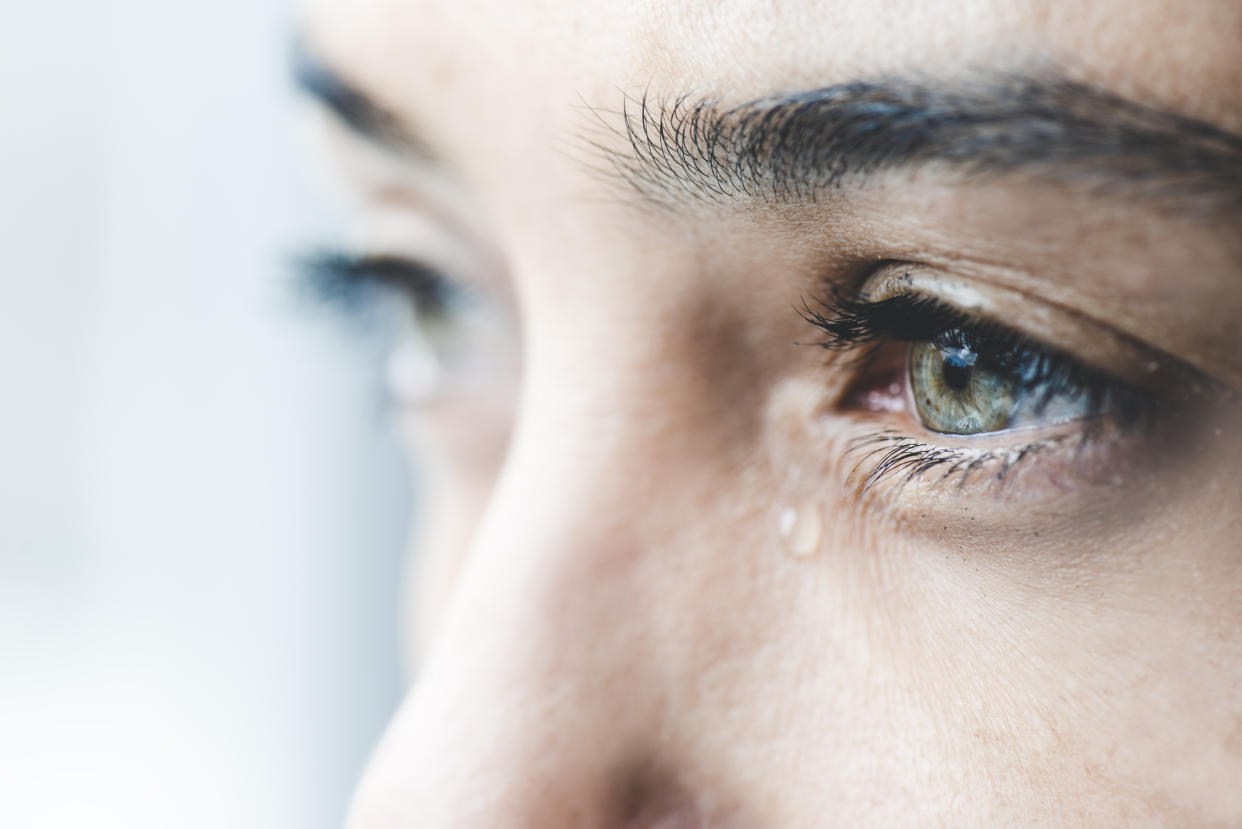Crying is good for you: Study reveals many Brits ever shed a tear

Life's tough (particularly when you throw a global health pandemic and cost of living crisis into the mix) so it would be understandable if we succumbed to a good sob every so often.
But, a good portion of the British public very rarely cry with recent research revealing over a quarter haven't cried in over a year.
Additionally, one in six of us never shed a tear or at least can't remember the last time we did.
The study, of 2,000 UK adults also found there was a difference in the genders when it comes to crying with almost one in five men (18%) claiming they don’t cry or don’t remember crying – while almost a quarter of men (24%) said they last cried more than a year ago.
While that all sounds pretty typical of the British stiff upper lip, big boys don't cry, mentally, it does mean those who aren't letting the tears flow could be missing out on a whole wealth of health benefits, both physical and mental.
Read more: Exactly why sex is so beneficial to our mental health
According to Dr Elena Touroni, consultant psychologist and co-founder of The Chelsea Psychology Clinic, when we cry we release cortisol and adrenaline, which is the body’s way of flushing out excess stress hormones and toxins.
And this process can have some pretty big plus points for our wellbeing, in some cases having the same impact as laughing.

Researchers at the University of South Florida found that 88.8% of people feel better after crying, that's partly because crying helps release the chemicals that build up in our bodies during times of stress.
“Crying can have a soothing effect, helping us to calm down and regulate our emotions when we are distressed," explains explains Sujata Paul, optician and clinical services lead at Lenstore, who conducted the study.
"Crying triggers the release of chemicals known as ‘feel good chemicals’ – oxytocin and endorphins, which help to boost mood and also provide relief for physical and emotional pain.”
Read more: How house plants can ease anxiety and encourage happiness
Dr Touroni says the self-soothing effect of crying can help us regulate our emotions and feel a greater sense of calm.
"Being able to cry shows that we are able to acknowledge and stay with feelings, instead of pushing them away or denying them," she adds.
"The stiff upper lip approach does us no favours in the long term. When we stuff our emotions down, they inevitably end up reappearing elsewhere further down the line."
Watch: 'Travel therapy' touted as a way to improve mental health
A good cry can have a positive impact on our physical health too.
“Tears lubricate your eyes, which maintains your eyesight," Paul continues. "And tears also contain lysozyme, which studies have shown to have antimicrobial properties.
"So crying can also help kill bacteria and keep your eyes clean.”
Why do we cry?
In basic terms crying is a natural response humans have to a range of emotions, including sadness, grief, joy, and frustration.
“It’s thought that tears cried in response to negative emotions, exist to signal our emotional distress to others,” Dr Jo Gee, psychotherapist, previously told Yahoo UK.
“This happens because our ’emotional’ tears contain more protein and are thicker than tears in response to illness or pain, therefore making them more visible to others.”
Read more: Harry Styles says having therapy for his mental health has made him feel more 'alive'

What happens to the body when we cry?
Actually, quite a lot.
“When we cry, the diaphragm pulses, moving strongly up and down,” explains Claire Dale and Patricia Peyton, authors of Physical Intelligence.
“This stimulates our vagus nerve to trigger the release of acetylcholine, the chemical that brings us back into balance (homeostasis).
"Cortisol (anxiety) levels drop, serotonin (happiness), oxytocin (belonging) and dopamine (pleasure) levels rise, physical tension dissipates and we feel ‘relief’.”
Interestingly, despite believing you can turn off the waterworks as and when we please, we actually can't control when we properly cry.
That’s because the signal to produce emotional tears or ‘crying’ is under the control of our autonomic nervous system.
“This system is responsible for our functions not consciously controlled, such as heart rate,” explains Elizabeth Hawkes, consultant ophthalmic and oculoplastic surgeon at the Cadogan Clinic
“An emotional trigger stimulates the amygdala and hypothalamus (parts of the brain) which send a direct response to our lacrimal gland. This explains why we can’t control when we want to cry!
"Interestingly, humans are the only species thought to be able to able to produce emotional tears.”
Read more: Duchess of Cambridge's brother shares mental health tips: 'I believe in the outdoors'
The crying gender gap
According to biochemist William H Frey, who studied the subject of crying during the 1980s, women cry five times more often than men.
Further research on Adult Crying from clinical psychologist Professor Ad Vingerhoets found that on average, men cry between six and 17 times a year, while women cry between 30 and 64 times.
Crying bouts usually last six minutes for women and between two and four minutes for men.
Experts believe this crying gender divide could be down to the hormone prolactin, which is associated with the prompting of tears and is found in higher concentration among females. But men also have bigger tear ducts, so tears are less likely to escape their eyelids.


